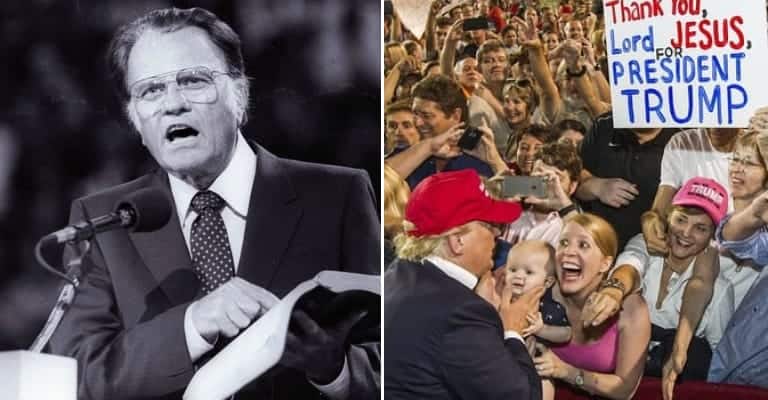The “religious right” is a term used to describe right-wing voters who make their political decisions primarily on the grounds of their religious beliefs. The movement exploded in America’s political life during the 1980s and led to things like George W. Bush’s theological justifications for the War on Terror and staunch evangelical support for Donald Trump as president. The movement was unexpected but has its origins in the decades leading up to the 1980s.
Today, the religious right is a fact of life for much of political life in America. Politicians know that they must make concessions to this influential voting bloc by espousing policies such as support for Israel and, among Republicans, opposition to abortion. Its influence can also be seen in the rise of far-right movements like the Tea Party Movement and the rise of religious, populist leaders, such as Sarah Palin and Donald Trump. These leaders did not rise to prominence in a vacuum but rather were and are upheld by decades of history that is frequently underwritten with religious values, whether they actually existed or not. In all likelihood, the religious right will remain a powerful, influential force in American politics for another generation.
Read on to learn about why the religious right rose to power, what it claims to stand for (and against), why it supports certain politicians but not others, and, most importantly, why its adherents are such strong supporters of Donald Trump.

16. The Scopes Trial Pushed Fundamentalists Into Exile
In Tennessee during the 1920s, laws prohibited the teaching of evolution in public schools. However, one avant-garde educator, John Scopes, taught evolution in his high school biology class. He was charged and put on trial for violating the anti-evolutionary laws, and the ensuing trial became a national frenzy. At stake was not this one teacher’s professional credentials but the evolution versus creation debate. Fundamentalists, Christians who insisted on the literal interpretation of the Bible, were pitted against secularists, who wanted evolution and other progressive ideals to be taught in schools. For those involved, the outcome would determine the status of the nation’s soul.
Clarence Darrow served as the lawyer for Scopes, and he argued against the skillful orator, William Jennings Bryan. Bryan won the case, something that should have been a victory for the fundamentalists. However, Darrow had so badly demolished all of the arguments that Bryan made that he and his fellow fundamentalists were humiliated on a national scale. Bryan died a few days later, possibly from suicide. Fundamentalist Christians went into a self-imposed exile, where they mostly no longer participated in public life but instead created their own culture. They built their own private schools that operated independently of government interference, where they could teach creationism without a national media frenzy.

